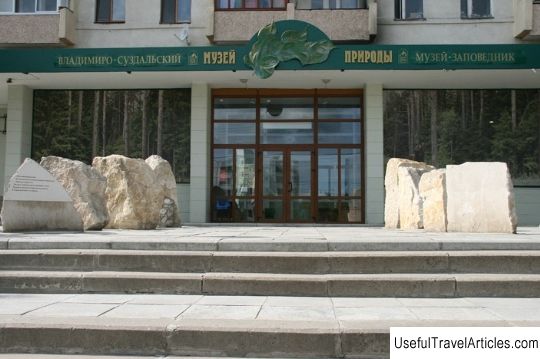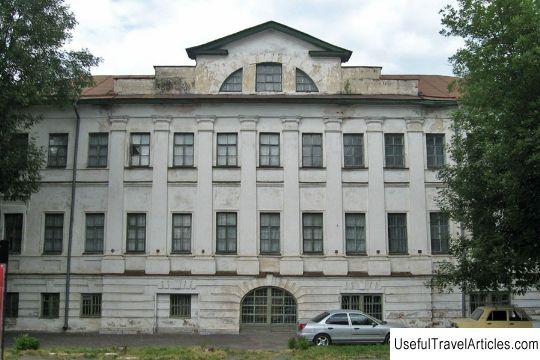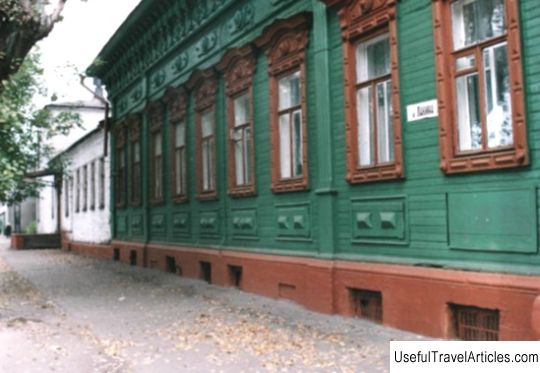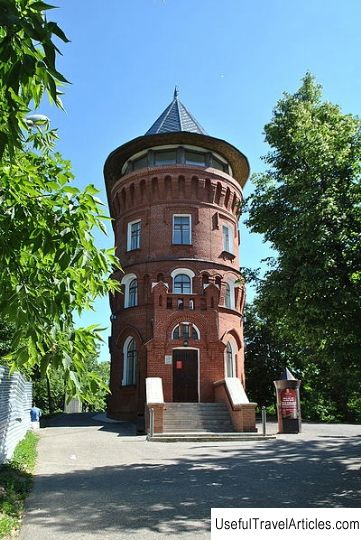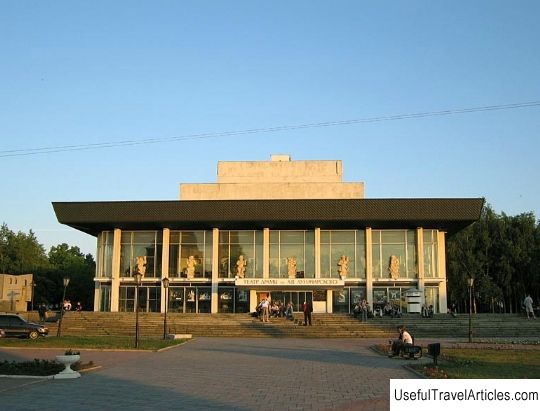Historical Museum description and photos - Russia - Golden Ring: Vladimir
Rating: 8,0/10 (8654 votes) 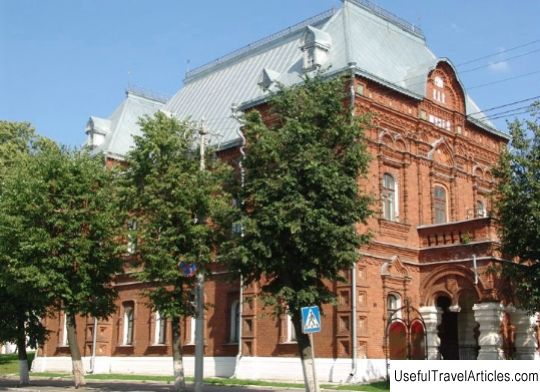
Historical Museum description and photos - Russia - Golden Ring: Vladimir. Detailed information about the attraction. Description, photos and a map showing the nearest significant objects. Photo and descriptionThe Historical Museum is located in a building that was built by the Vladimir Archive Scientific Commission. It houses an exposition related to the Vladimir-Suzdal Museum-Reserve, which introduces the development of the Vladimir land from ancient times to the 1917 revolution. In 2003, a renewed historical exposition was opened, striking with unique exhibits and originality of the artistic solution. On the first floor of the building, theatrical and figurative techniques were used for the artistic solution of the exposition. The story about the history of the Vladimir region begins with an acquaintance with the site of the ancient man Sungir, which was opened in 1956 near Vladimir. Rare burials of ancient people unparalleled in complexity of ritual, 76 thousand items discovered on the site of the dwellings of Homo Sungirensis provide an opportunity to see how our ancestors lived 30 thousand years ago. The hall of ancient history is represented by the Sungir collection, as well as recreated portraits of ancient people, their tools, clothing. It tells about the struggle of man with the forces of nature, about the emergence of self-awareness in the ancient man, his first attempts to understand the world around him and creatively express his attitude to life. The hall of ancient history has the shape of an ellipse, a sphere, which, as it were, creates an image of space, like some kind of egg that gives life. Mirrors are located at the corners of the hall at a certain angle of inclination, creating a miracle of "breakthrough space". As if from the looking glass on the visitor "flood" reflected repeatedly and from this more voluminous, believable: an ice-hole with crystal water, a pagan temple, etc. In the third corner - a composition dedicated to Andrei Bogolyubsky, the founder of the Vladimir-Suzdal principality. The spiral white-stone staircase of the Bogolyubov Palace has been recreated here, as a symbol of man's striving for God. In the fourth corner of the hall is a plaster cast depicting Vsevolod III the Big Nest, who ruled over Vladimir for 35 years. In the center of the hall is a genuine white-stone cross of the 12th century, as well as images of the Bogolyubovskaya and Vladimirskaya icons of the Mother of God. Among other things, visitors to the museum can also learn about the storming of the city by the Mongol-Tatar troops in 1238. The picture of the death of a woman who tried in vain to save her wealth is striking. crosses-encolpions, icons, necklace. In 1993, archaeologists discovered this priceless treasure and today it is presented for public viewing. The second floor of the museum is decorated in a traditional style. During the reconstruction, the original painting of the vaults with medallions and images of Vladimir Monomakh, Andrey Bogolyubsky, Vsevolod, Alexander Nevsky and bright floral ornaments were restored. Here is the history of Vladimir from the beginning of the 17th century to the beginning of the 20th. The exposition of the museum also touches on the all-Russian history. Here is a section on the Time of Troubles at the beginning of the 17th century, a valuable exhibit of which is a rare icon depicting the murder of Tsarevich Dmitry in Uglich, here for the first time a copy of the Letter of Grant to the Savior-Euthymius Monastery in Suzdal from False Dmitry I. A unique exhibit is the church vest, which was sewn from the fur coat of Prince Dmitry Pozharsky. In the section dedicated to Peter's era, materials about Peter's associates associated with the Vladimir region are presented, a rare portrait of Peter's first wife, Evdokia Lopukhina, is exhibited, who was exiled by him to the Intercession Monastery in Suzdal. A separate topic is the material about a native of the Vladimir land, the discoverer M.P. Lazarev, as well as the layout of the sloop "Mirny" and the sextant of the early 19th century. The period of the reign of Alexander I, his reforms, including the abolition of serfdom, judicial reform, is described in detail. The section on the flourishing of the industry of these places in the second half of the 19th - early 20th centuries admires the multicolored fabrics made at the local textile factories, porcelain and crystal dishes produced by the factories of M.S. Kuznetsova, Yu.S. Nechaev-Maltsov, a variety of non-ferrous metal products from the Kolchugin plant A.G. The period of the reign of Nicholas II is broadly shown here. The announcement of the coronation of the emperor and the menu of the gala dinner on this occasion, as well as exhibits that tell about the visit of Suzdal and Vladimir by the imperial family in May 1913 are shown. One of the interesting exhibits in the section on the February Revolution is a chest with dishes and silver coins, which was buried in the turbulent revolutionary time by the Suzdal merchant Zhilin, and was found on the site of his house only in 1983.
         We also recommend reading Agios Panteleimonas Acheras Monastery description and photos - Cyprus: Nicosia Topic: Historical Museum description and photos - Russia - Golden Ring: Vladimir. |
